There are many butterfly species that might be found in the woodlands of Hertfordshire or Middlesex, and many are quite easy to identify, however some are fast flying and/or like to spend a lot of the time high up in the woodland canopy! We recommend the use of binoculars when trying to identify these butterflies especially those flying high in the woodland canopy! We hope these images and tips will help with their identification.
There are many books and guides available to help with identification, but one of the simplest is the FSC Field Laminated Guide to Butterflies (Illustrated by Richard Lewington). Alternatively there are now many online resources where a lot of help with identification is also available.
Purple Emperors are usually on the wing from the last week of June into July and can be seen in or near woodland, that has plenty of sallow/willow nearby. The Purple Emperor may be seen gliding between gaps in the tree canopy usually at a high-point in the wood. Everyone's dream is to see a male collecting salts from the ground or from 'waste matter.' Although both males and females can both appear dark, the upperwings of the male can refract a purple sheen when seen at some angles.
The ideal time in normal weather to observe a grounded male is between 10am and 12 noon. Females can be seen around sallows from about 12 noon to 2pm and the males ascend to the woodland canopy from around 12:30pm.
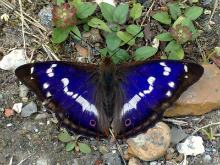 |
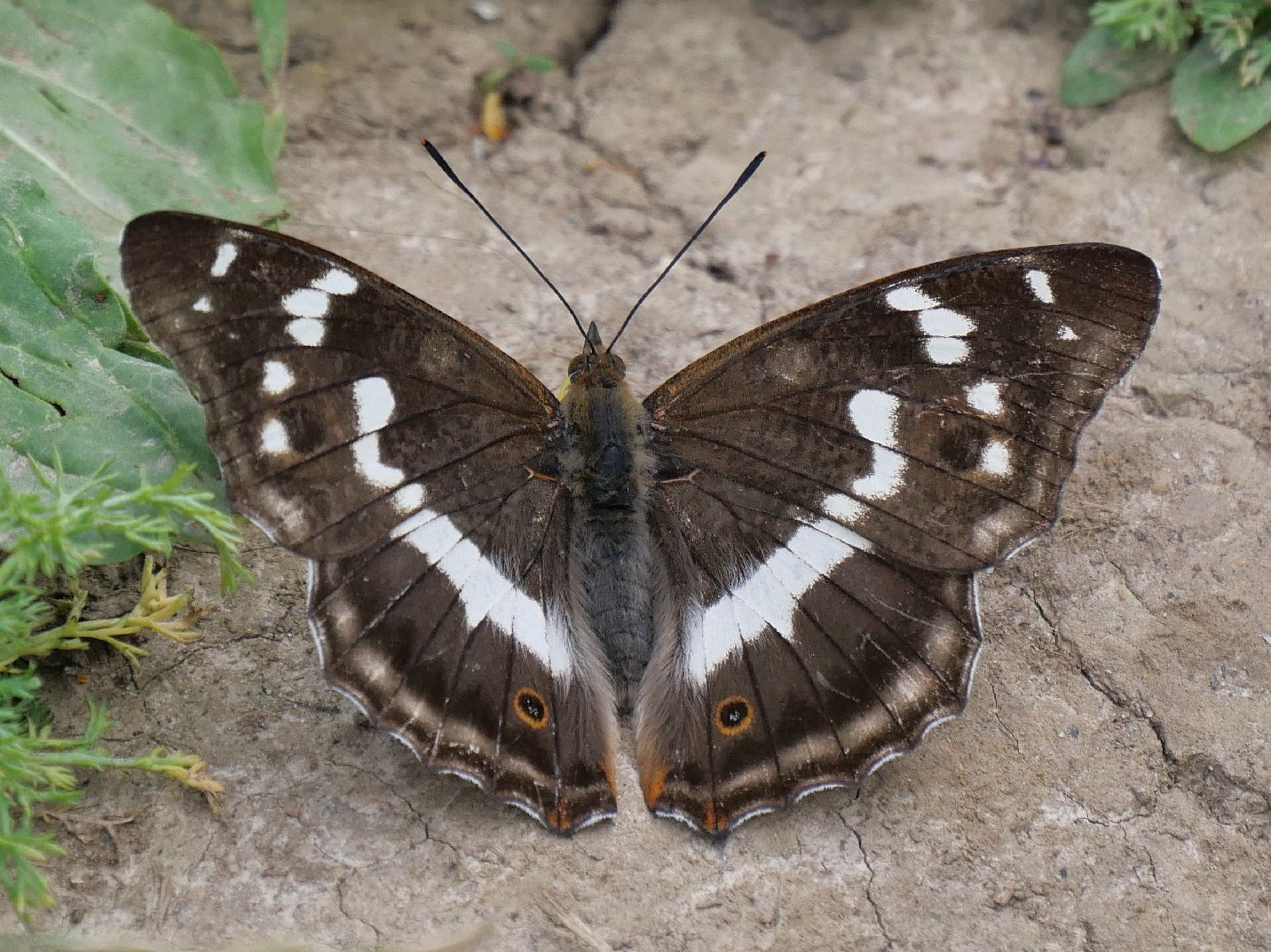 |
Purple Emperor male
© photo: Laurence Drummond |
Purple Emperor female
© photo: Andrew Neild |
The Purple Emperor uses its yellow proboscis to feed on aphid honeydew and to take salts. When the wings are closed it is much harder to determine whether it is male or female to the inexperienced eye! The Purple Emperor will visit sap runs but is not normally observed taking nectar but there have been a few reports mostly seen on buddleia.
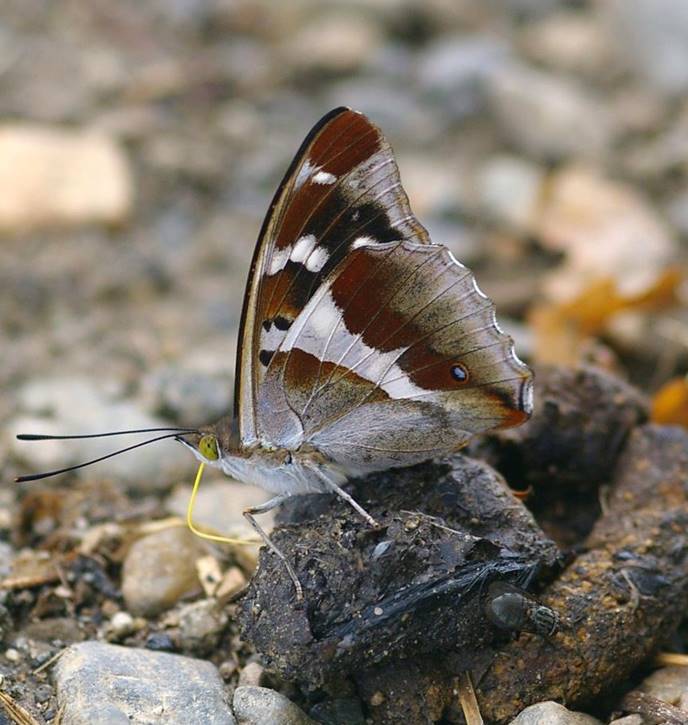 |
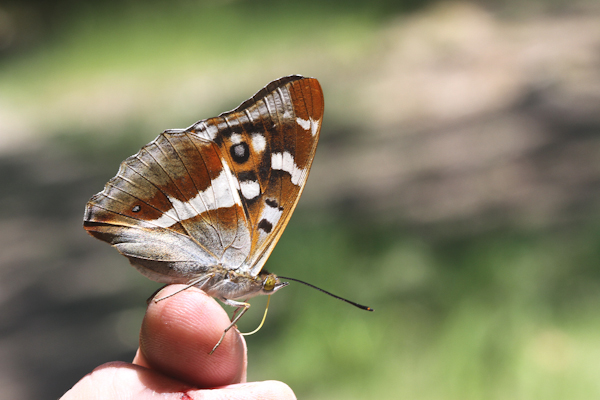 |
Purple Emperor male
© photo: Liz Goodyear |
Purple Emperor male
© photo: Sandra Standbridge |
Historically male Purple Emperors were presumed to have a 'master tree' where they would congregate in the hope of finding a female. In truth there are very few actual standalone trees fitting this category. The trees tend to be a cluster of trees at the highest point in the woodland that might have one slightly more prominent tree. The males perch high up and then fly across the canopy and if you are lucky, their might be a gap in the canopy where the butterfly can be observed clashing with and chasing other males. On calm days, these flights and clashes can be observed through binoculars from some distance if watching from across a field.
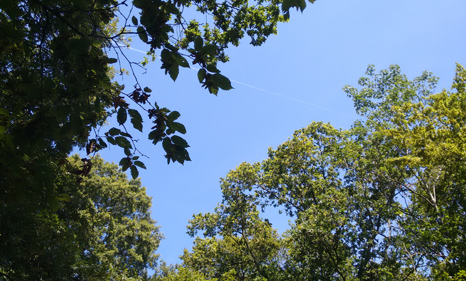 |
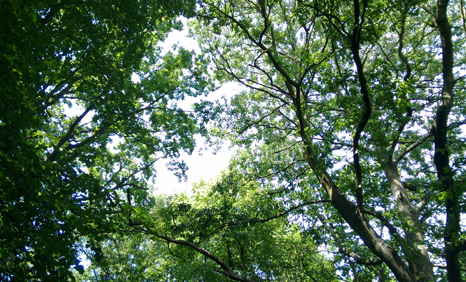 |
A typical woodland canopy gap
© photo: Liz Goodyear |
A more typical woodland canopy gap
© photo: Liz Goodyear |
The general colours and patterns of the White Admiral are not unlike those of the Purple Emperor. A high-flying Purple Emperor could easily be passed off as a White Admiral during casual observations, although the White Admiral is rather smaller and has a more rounded wing-shape. White Admirals can be seen mainly from mid June to mid July in older woods that have plenty of honeysuckle. Like Purple Emperors, they glide in and out of the canopy and also feed on aphid honeydew in the tree-tops, but they are more often seen visiting flowers and bramble-banks lower down.
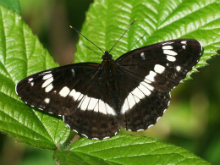 |
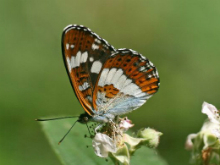 |
White Admiral
© photo: Clive Burrows | White Admiral
© photo: Clive Burrows |
The Red Admiral is a large and distinctive butterfly, only a little smaller than a Purple Emperor. It can be seen throughout the summer in many places including woodlands and gardens. The butterfly will be seen feeding on nectar, but will also take salts from 'waste matter.' In late afternoon, the butterfly will fly up into the woodland canopy and can appear to mimic the territorial behaviour of a Purple Emperor!
 |
|
Red Admiral
© photo: Dave Miller | Red Admiral
© photo: Helen George |
The Silver-washed Fritillary is a spectacular large orange butterfly that can be seen in high summer visiting flowers in open woodland rides and clearings which the male patrols in search of females. The female lays her eggs on tree-trunks and moss near to violets growing in dappled shade, on which the caterpillars feed come spring and where they bask in sunlit patches.
For many years it was considered extinct in our branch area but dramatically returned in the early 2010s and is now well established thoroughout the east of England.
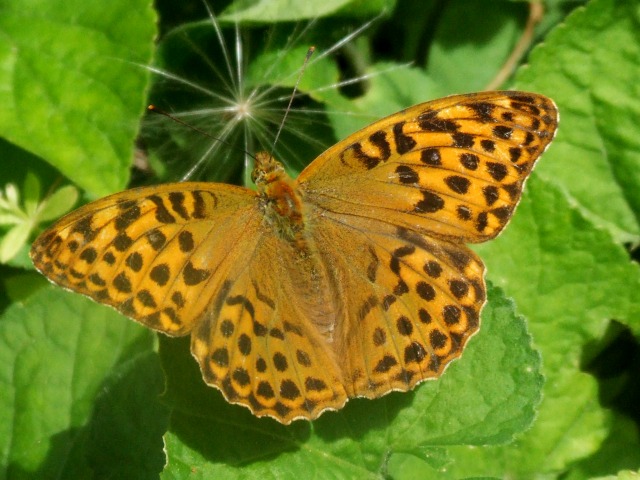 |
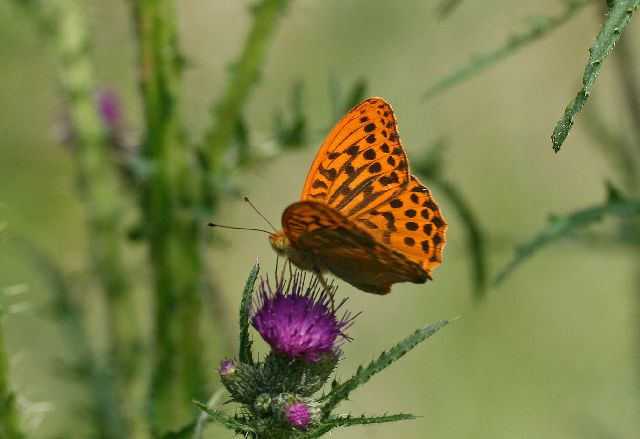 |
Silver-washed Fritillary
© photo: Alessandro Giusti |
Silver-washed Fritillary
© photo: Clive Burrows |
The Comma is smaller than a Silver-washed Fritillary but when seen flying across a bramble bank or along a woodland ride at the height of summer, it can be easily mis-identified, so care must be taken to double check. However, once settled it is easy to tell the difference between the two species!
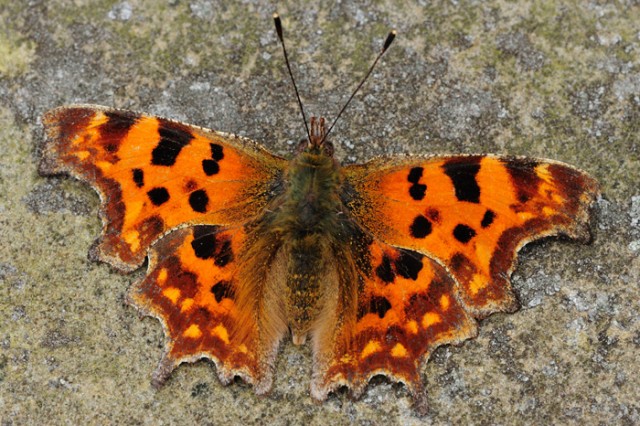 |
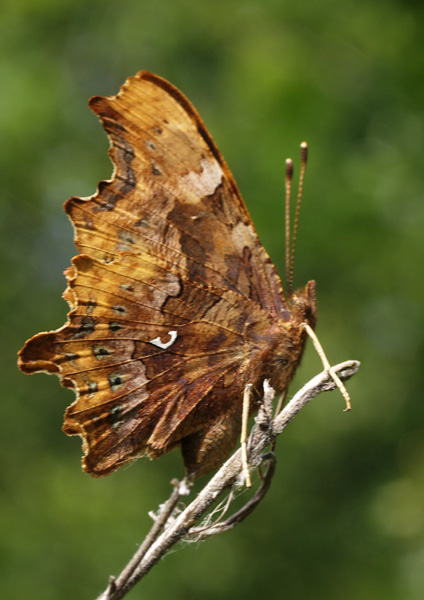 |
Comma
© photo: Lee Browne |
Comma
© photo: Lee Browne |
The 'Hairstreaks' are smaller than the other woodland specialists and there are three hairstreak species that can be encountered in wooded areas in our branch area not just specifically woodland. These are the Purple Hairstreak, White-letter Hairstreak and now with the increased possibility of encountering Brown Hairstreak. Although observers hope to see these species low down nectaring, particularly the males spend much of their day at the top of trees.
The Purple Hairstreak also feeds on aphid honeydew and spends much of its time high in the canopy, although occasionally one will be observed low down usually soon after emergence. During very hot weather, they are known to come down to take moisture from the ground or be seen low on a shaded side of a tree. They are seen mainly in July into August, and especially on oak - their larval foodplant. The best time of the day to see this butterfly is late afternoon/early evening ideally using binoculars, by standing with the sun behind you and looking up at the top and sides of a big oak tree. What appears to be tiny butterflies will be seen chasing and clashing over the leaves. This butterfly does rest with its wings open allowing the male's purple iridescence to be shown off.
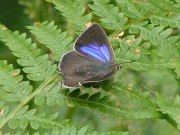 |
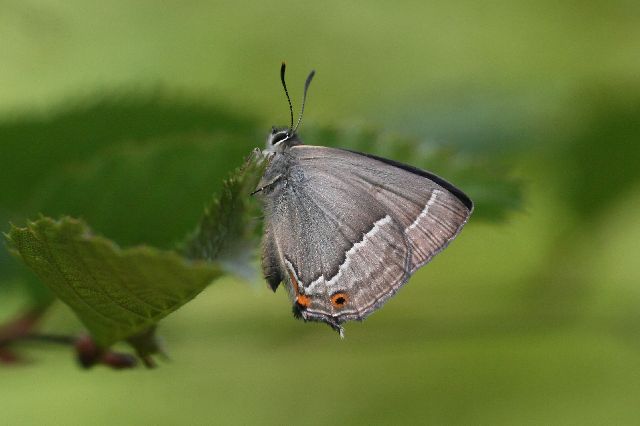 |
Purple Hairstreak
© photo: June Crew |
Purple Hairstreak
© photo: Clive Burrows |
The White-letter Hairstreak is a smaller darker butterfly in comparison to the Purple Hairstreak, although it also feeds on aphid honeydew and spends much of its time high in the canopy. It is more likely to be seen low down and enjoys nectaring on a variety of summer flowers. They tend to fly a few weeks earlier than Purple from mid June but can be flying together around oak, ash or elm. The best time to see males is early morning or late afternoon, looking for the sheltered side of an elm (their larval foodplant) but equally likely around ash, maple or oak when tiny dark butterflies are seen to fly out and up high into the sky clashing. If trying to determine the best part of the tree to look at or if there are several elm trees, which one to observe - if you start to see lots of little flies flying in a certain area this might be the best place to start looking! The butterfly does not open its wings and gives the appearance of a small dark triangle - if the hairstreak is seen to open it's wings, it is not a White-letter! Whereas Purple Hairstreak when flying and clashing in the canopy tend to stay close to the tree, the White-letter Hairstreak when clashing with another male will fly up high into the sky and out of sight!
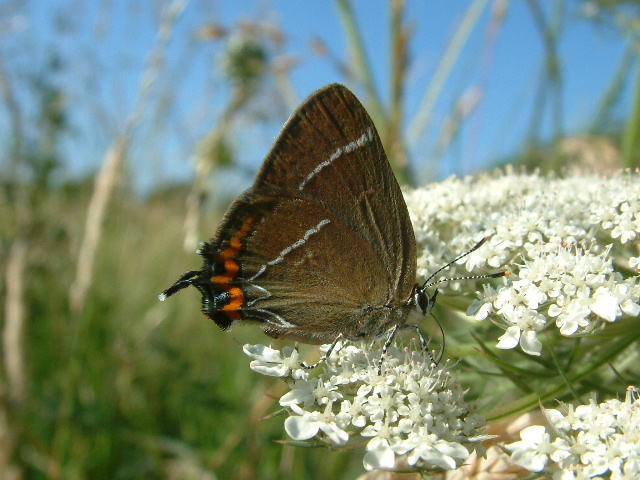 |
White-letter Hairstreak
© photo: Trevor Chapman |
The Brown Hairstreak is not strictly a woodland butterfly but may be seen along a blackthorn/prunus rich woodland edge. Like all hairstreaks it feeds on aphid honeydew and spends much of its time high in the canopy, although it will be observed low down and enjoys nectaring on a variety of summer flowers especially yellow flowers. They are seen mainly from mid July into September. The best time to see the male butterfly in the canopy is early morning flying around ash, or maple but they will also fly around oaks alongside Purple Hairstreak (if seen after 11am it is more likely to be a Purple Hairstreak. The females tend to start egg laying during the middle of the day and can be encountered nectaring in sheltered sunny clearings. The butterfly will rest with its wings open allowing the observer superb views of this beautiful butterfly!
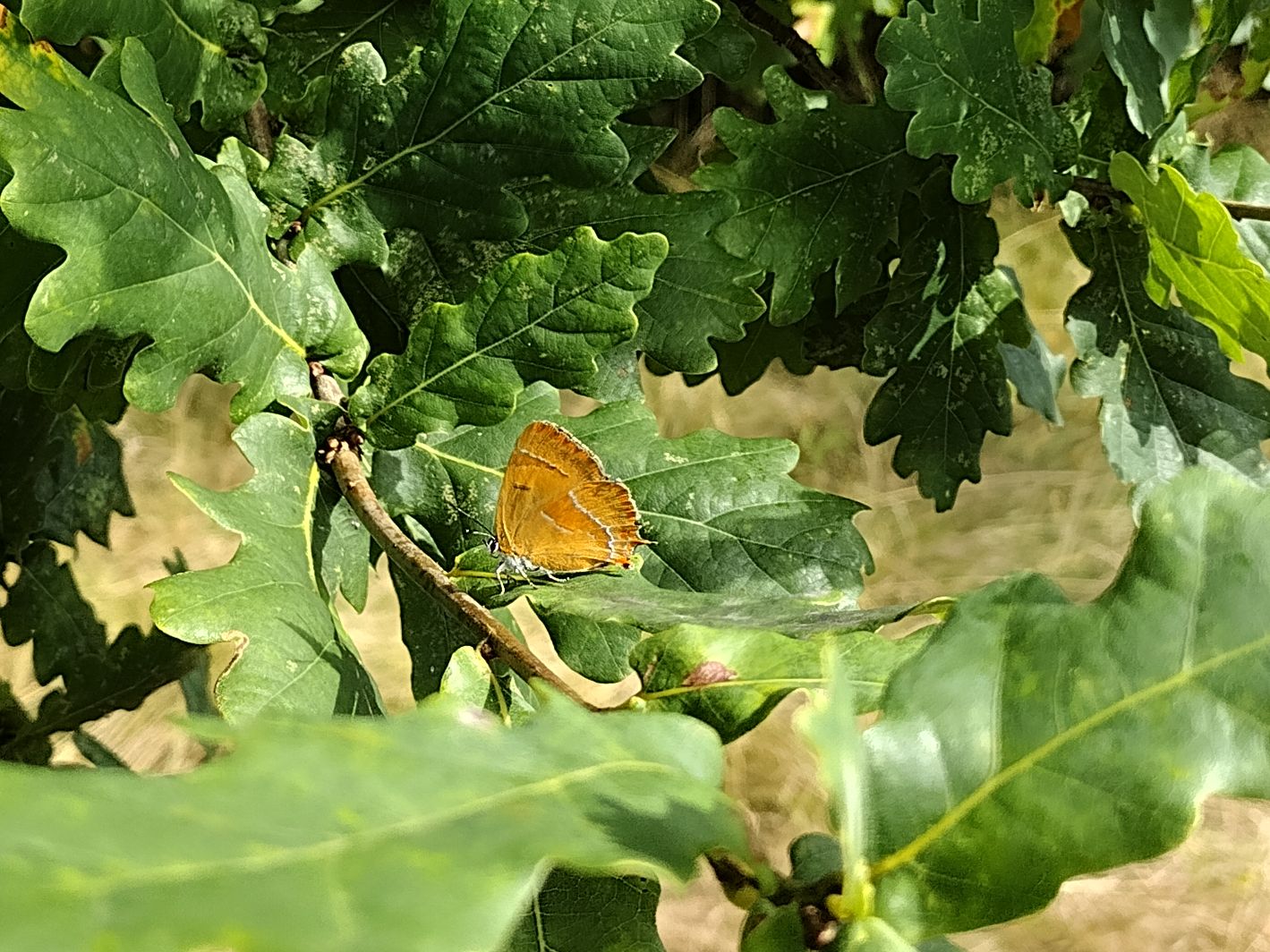 |
 |
Brown Hairstreak
© photo: Nick Furtek |
Brown Hairstreak
© photo: Sandra Standbridge |